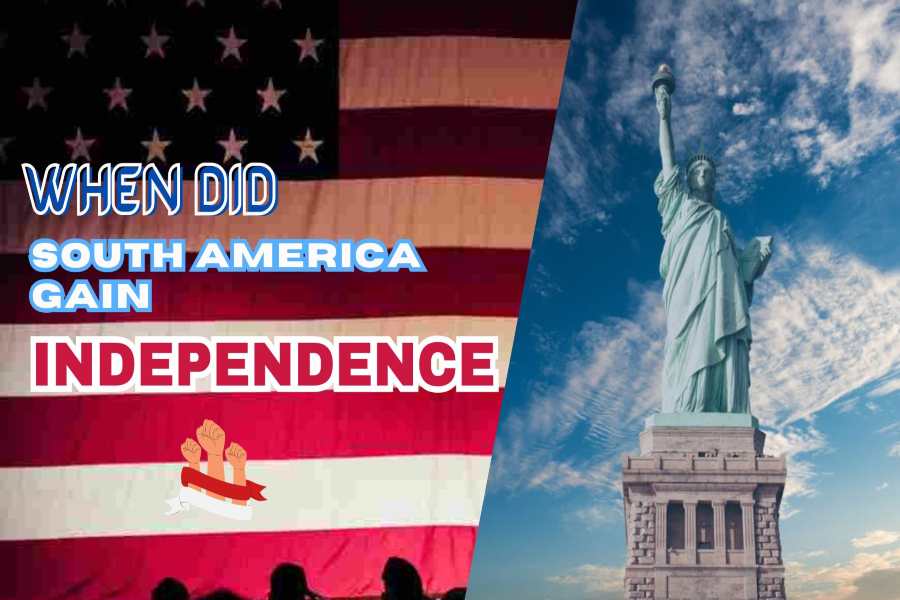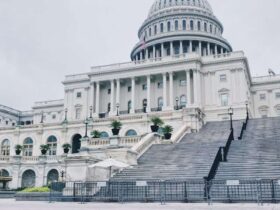South America, a continent rich with diverse cultures, languages, and landscapes, has a tumultuous history marked by centuries of European colonization. Dominated primarily by Spanish and Portuguese powers, the continent was a mosaic of indigenous civilizations and African diaspora communities, all under colonial rule. The quest for independence in South America was not a singular event but a series of revolutions that unfolded over the early 19th century, inspired by Enlightenment ideas and spurred by the successful independence movements in North America and France. This article explores the intricate journey toward independence across South American nations, highlighting key figures, pivotal battles, and the enduring legacy of these movements in shaping the continent’s path to self-determination and sovereignty.
When did South America gain independence?
South America’s journey to independence was a complex process that unfolded over the early 19th century, beginning around 1806 with the British invasions of the River Plate and stretching into the 1820s. Each country fought uniquely against colonial powers, primarily Spain and Portugal. Key figures like Simón Bolívar and José de San Martín played pivotal roles in liberating nations such as Venezuela, Colombia, Ecuador, Peru, and Bolivia. At the same time, Brazil declared its independence from Portugal in 1822. The timeline varies by country, but by the late 1820s, most South American territories had successfully established independence, marking the end of colonial rule and the beginning of a new era of self-determination across the continent.
The Path To Independence
The path to independence in South America was a multifaceted and prolonged struggle marked by a series of revolutionary movements across the continent. This journey was a fight against colonial rule and a quest for the recognition of indigenous rights, the abolition of slavery, and the establishment of sovereign nations. Here’s an overview of the key elements that characterized the path to independence in South America:
Colonial Discontent
The late 18th and early 19th centuries were a period of growing unrest in South America. The Bourbon Reforms, which aimed to increase Spanish control over its colonies, along with heavy taxation and restricted trade policies, bred widespread dissatisfaction among their diverse populations. This discontent was not limited to economic grievances; it also included a desire for political representation and autonomy.
Influence of Global Revolutions
The American Revolution (1776) and the French Revolution (1789) significantly influenced South American leaders and intellectuals. The success of these revolutions demonstrated that colonial rule could be successfully challenged and provided a model for revolutionary ideology and tactics. The Enlightenment ideals of liberty, equality, and fraternity resonated with many who sought to break free from colonial domination.
Napoleonic Wars
The Napoleonic Wars (1803-1815) were crucial in the South American independence movement. The invasion of Spain by Napoleonic forces in 1808 and the capture of King Ferdinand VII destabilized Spanish authority and created a power vacuum in the colonies. This situation led to the formation of juntas, or local governments, which initially claimed loyalty to the deposed king but gradually moved towards calls for independence.
Key Figures And Military Campaigns
Charismatic and strategic leaders led the independence movements across South America:
- Simón Bolívar, known as “The Liberator,” played a central role in the independence of present-day Venezuela, Colombia, Ecuador, Peru, and Bolivia.
- José de San Martín was instrumental in liberating Argentina, Chile, and Peru, employing a strategy of crossing the Andes to attack Spanish forces from unexpected quarters.
- In Brazil, Dom Pedro I, the son of the Portuguese king, declared Brazil’s independence in 1822, leading to a relatively peaceful transition compared to other regions.
Challenges and Conflicts
The road to independence was fraught with challenges, including internal divisions within the revolutionary movements, harsh geographic conditions that made military campaigns arduous, and the European powers’ attempts to quell the uprisings. Despite these obstacles, the revolutionary armies achieved significant victories, such as the Battle of Boyacá (1819) and the Battle of Carabobo (1821), which were decisive in securing independence for several countries.
Declaration of Independence
The actual declarations of independence occurred at different times across the continent, starting with Venezuela in 1811 and culminating with the liberation of the last Spanish colonies, Peru and Bolivia, in the early 1820s. Brazil’s path to independence was unique, occurring in 1822 through a declaration by its prince regent, Dom Pedro I, without a violent struggle against Portugal.
Country-Specific Independence Movements
The independence movements across South America were as diverse as the continent, with each country experiencing its unique journey to sovereignty. Here’s an overview of the critical moments in the independence movements of several South American countries:
Venezuela: Venezuela’s push for independence began with the Caracas Junta in 1810, leading to the declaration of independence on July 5, 1811. However, a series of battles against loyalist forces ensued. Simón Bolívar emerged as a key figure, leading the campaign that ultimately secured Venezuela’s independence after the decisive Battle of Carabobo on June 24, 1821.
Argentina: The May Revolution of 1810 in Buenos Aires marked the beginning of Argentina’s journey to independence, as it created the first local government junta that claimed sovereignty from Spain. Independence was formally declared on July 9, 1816, at the Congress of Tucumán. José de San Martín played a crucial role, leading the crossing of the Andes to liberate Chile and Peru.
Chile: Chile’s independence journey began with establishing the First National Government Junta on September 18, 1810. The struggle for independence featured ups and downs, including a period of Spanish reconquest. Bernardo O’Higgins, alongside José de San Martín, led the successful liberation effort, culminating in Chile’s formal declaration of independence on February 12, 1818.
Brazil: Brazil’s independence process was unique, largely due to its peaceful nature and the role of the Portuguese royal family. Dom Pedro I, the Prince Regent, declared independence on September 7, 1822, after a relatively bloodless confrontation with Portuguese forces. This led to the founding of the Empire of Brazil.
Colombia: The independence movement in the area known today as Colombia began with the establishment a junta in Santa Fe de Bogotá on July 20, 1810. Initially part of the Viceroyalty of New Granada, the territory gained independence after Simón Bolívar won the Battle of Boyacá on August 7, 1819. The victory led to the creation of the Republic of Gran Colombia, encompassing modern-day Colombia, Venezuela, Ecuador, and Panama.
Ecuador: Ecuador’s path to independence was closely tied to the campaigns of Simón Bolívar and the southern campaign of Antonio José de Sucre, Bolívar’s lieutenant. Ecuador was part of Gran Colombia until its separation in 1830. The Battle of Pichincha on May 24, 1822, was decisive in securing Ecuador’s independence from Spain.
Peru: Peru was the stronghold of Spanish power in South America, with its independence secured later than its neighbors. The liberation of Peru was achieved through the campaigns led by José de San Martín and Simón Bolívar. San Martín declared Peru’s independence on July 28, 1821, but Bolívar would eventually defeat the remaining Spanish forces, culminating in the Battle of Ayacucho on December 9, 1824.
Bolivia: After Antonio José de Sucre, a trusted general of Bolívar, liberated the Battle of Ayacucho, Bolivia (then Upper Peru). The country declared independence on August 6, 1825, and was named after Simón Bolívar.
Paraguay: Paraguay declared its independence from Spanish rule on May 14, 1811, after a peaceful coup led by local leaders. It was one of the first countries in South America to gain independence, doing so without significant bloodshed or extended conflict.
Uruguay: Uruguay’s route to independence was influenced by its position between Spanish Buenos Aires and Portuguese Brazil. Initially part of the Spanish Viceroyalty of the Río de la Plata and later Brazil, Uruguay declared its independence in 1825, recognized in 1828 following the Treaty of Montevideo, aided by British mediation.
The Legacy Of Independence
The legacy of independence in South America is profound and multifaceted, influencing the continent’s political, social, and cultural landscapes. These movements reshaped the geopolitical map and laid the groundwork for developing national identities and the ongoing struggle for democracy and social justice. Here’s an overview of the enduring legacy of independence across South America:
The independence movements led to the dismantling the Spanish and Portuguese empires in South America, giving rise to new, sovereign nation-states. This process involved the creation of borders, governments, and constitutions, setting the stage for developing national identities distinct from colonial rule.
Independence fostered a sense of nationalism and pride in one’s country, contributing to the rich tapestry of South American cultural identity. Literature, art, and music from the post-independence period often reflect themes of liberation, resilience, and reconnection with indigenous and African heritage, contributing to a distinct cultural identity celebrated worldwide.
The aftermath of independence saw many South American countries grappling with political instability, territorial disputes, and internal conflicts. The colonial legacy of social stratification persisted, leading to ongoing challenges in achieving social equity. These struggles have shaped the political landscape, leading to various forms of governance, from military dictatorships to democracies.
Independence movements disrupted the colonial economic system, heavily reliant on resource extraction and forced labor. While countries sought to develop their economies independently, many faced challenges such as foreign debt, dependency on commodity exports, and uneven development. These issues remain pertinent as nations seek sustainable and equitable economic growth.
The successful independence movements in South America inspired liberation struggles worldwide, including in other Latin American countries, Asia, and Africa. The principles of self-determination and anti-imperialism championed by South American liberators have impacted global politics and the fight against colonialism.
Figures such as Simón Bolívar, José de San Martín, and Bernardo O’Higgins are national heroes, with their philosophies and actions continuing to inspire political thought and activism. Although not fully realized, their vision for a united and free South America remains a powerful ideal.
The fight for independence laid the foundation for ongoing social justice, indigenous rights, and equality struggles. Movements across the continent continue to seek the fulfillment of the promises of independence, advocating for policies that address inequality, protect human rights, and promote social inclusion.
Bottom Line
The legacy of independence in South America is a testament to the resilience and determination of its people to overcome colonial oppression. While the continent faces ongoing challenges, the spirit of independence—characterized by a pursuit of freedom, justice, and self-determination—continues to shape its nations. The movements redrew political boundaries and ignited a process of cultural, social, and economic transformation that resonates today. The struggle for sovereignty has evolved into a broader quest for equity, democracy, and human rights, reflecting the complex inheritance of the independence era. As South America continues to navigate the legacies of its colonial past and the aspirations of its diverse peoples, the principles of liberty and self-governance championed during the independence movements remain central to its collective identity and aspirations for a just and prosperous future.











Leave a Reply